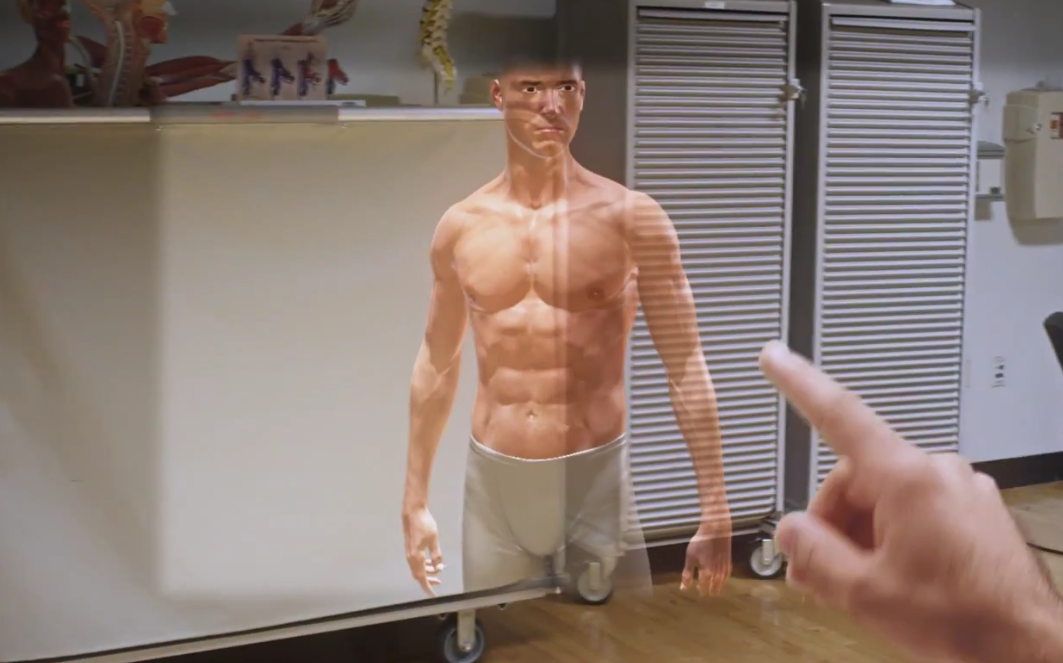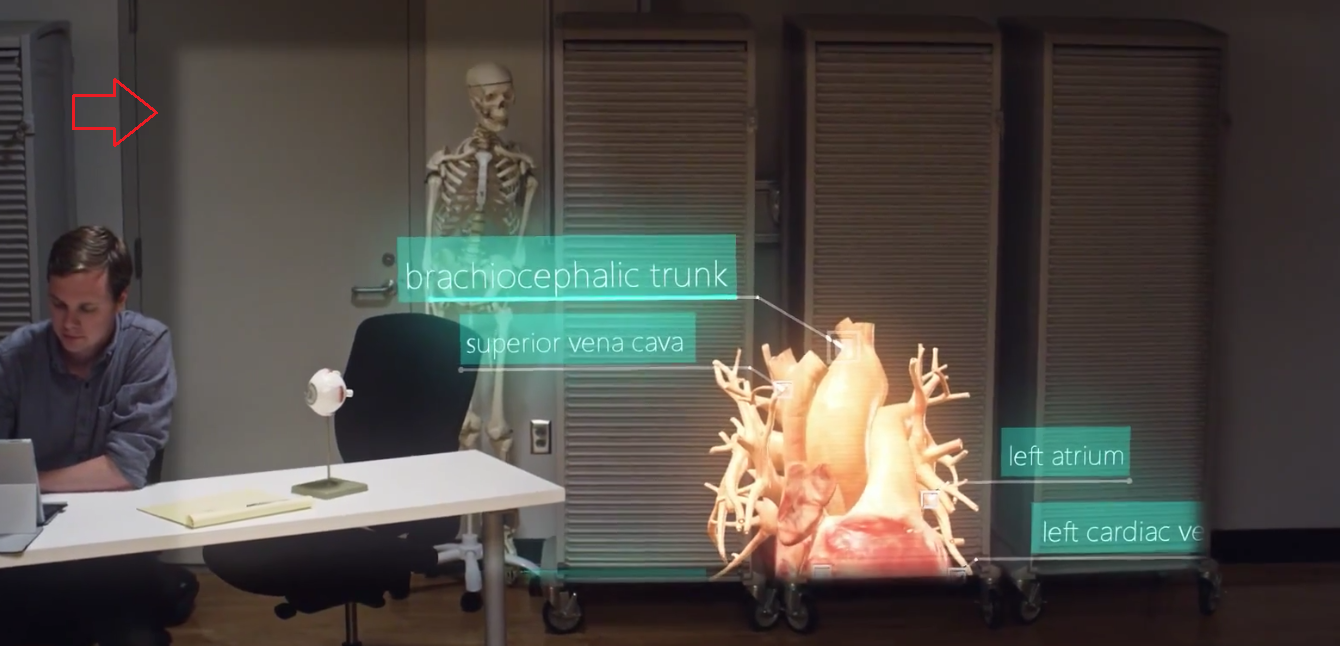New HoloLens video demos usage in medicine, is more honest about field of view

Today, Microsoft has published a new video highlighting HoloLens and their partnership with Case Western Reserve University. The deal between the two institutions was announced back at Build along with a demonstration on stage. Based in Cleveland, Ohio, Case Western Reserve University is a private research university who plans to use HoloLens to teach anatomy and solving human problems.
The two-minute video demonstrates how HoloLens can reveal aspects of the human body including the inner layers of the heart to students for a clearer understanding of human anatomy. It is a fascinating example of how HoloLens is not just a gimmick but something that can be used to solved real-world problems.

Perhaps more interestingly is how the video portrays the holograms. It is no secret that some in the media have felt a little crestfallen over the representation of holograms using HoloLens. Specifically, previous videos implied that the holograms filled a user's field of view. Instead, from first-hand usage, some of us noticed that the actual FOV was much more limited, resulting in cut-off holograms. It is not bad, just not what was expected and clearly a limitation on some of the first-gen technology in 2015.

Now, in today's video you can see faint lines of where the hologram begins and ends, more accurately representing what a user sees when wearing the hardware. As someone who has worn the device on four separate occasions, I can say that this is certainly more realistic.
Microsoft is clearly taking a slow and steady approach to HoloLens, refining the hardware, working with partners and gearing up for what will probably be a limited rollout sometime later this year (hopefully).
It remains to be seen how people will react to the limited FOV, however, my recent gaming experience at E3 was very positive, and I am not too concerned. After all, we now have freaking holographic computing.
Source: Microsoft Research; Big thanks to Ryan B., for the tip!
All the latest news, reviews, and guides for Windows and Xbox diehards.

Daniel Rubino is the Editor-in-chief of Windows Central. He is also the head reviewer, podcast co-host, and analyst. He has been covering Microsoft since 2007 when this site was called WMExperts (and later Windows Phone Central). His interests include Windows, laptops, next-gen computing, and wearable tech. He has reviewed laptops for over 10 years and is particularly fond of 2-in-1 convertibles, Arm64 processors, new form factors, and thin-and-light PCs. Before all this tech stuff, he worked on a Ph.D. in linguistics, performed polysomnographs in NYC, and was a motion-picture operator for 17 years.
